
I’ve been priding myself on never skipping a blog post – well, I may have skipped one, a couple of years ago when I was undergoing surgery, which seems like a valid reason. But a couple of weeks ago, one of my recently adopted super cute space bunnies got out of her enclosure, and next morning I found her lying on my front lawn with a big hole in her neck. This has obviously considerably unbalanced the universe, as I now only have Yin, and no Yang.
So, I clean forgot that my blog was due that week. The good news is that within less than a week, I was able to find a new friend for Yin, who took the loss of her sister much to heart and was spending way too much time lying apathetically in her basket. The new rabbit is a stroppy ball of fluff whom I have dubbed “Te Po” – Maori for “The Night” – because her dark fur with its blueish and bronze highlights does look rather like the night sky.
She isn’t Yang – Yang was special. I was planning to teach her some computer, since she clearly had an affinity with technology! But she’s a darling and a beauty, and she and Yin, after sorting out some stuff in a rather dramatic boxing match, quickly became best buddies.

But, enough of my pets. Time to look at some art! It’s been a while since I’ve posted science fiction, rather than fantasy or mythologically inspired art, and I intend to remedy this omission.
To my mind, what distinguishes science fiction art from most traditional art genres – landscape, still life, portraiture, you have it – is that it finds aesthetic appeal in modern technology. If, say, in a traditional landscape piece a power pole would be regarded as a “flaw” – something the artist might carefully edit out – then a science fiction artist might take the rhythm of power poles in a landscape as their motive. And why not – it is, after all, the reality that surrounds us!
But of course, science fiction art is not concerned with depicting our modern reality as it is: it is concerned with extrapolating how reality might look in the future. But it does, of necessity, take our contemporary technology as its starting point. And not just the technology: from fast food to city grunge to modern dating, science fiction is not only concerned with technology – but also with the consequences technology might have for our human society.
In the following series of blog posts, I’d like to look at how artists interpret technology – both as it is, and as it might be in the future. Space stations seem a good start: they are a technological reality, even if one that does not form part of the everyday experience of most people – unless they happen to be astronauts! But the are also a quintessential locus for projecting dreams about a bright technological future which might take humans to the stars.



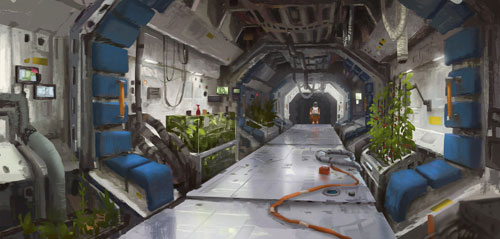













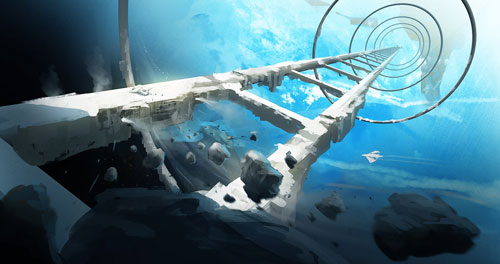
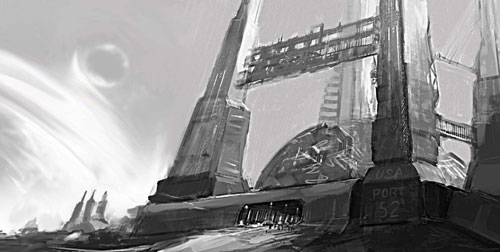


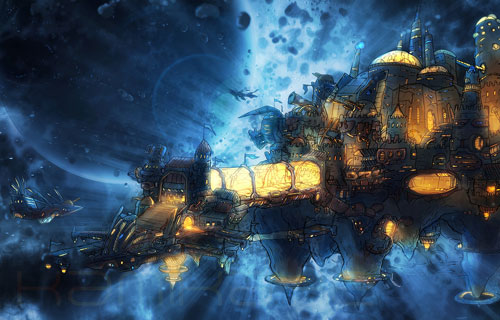
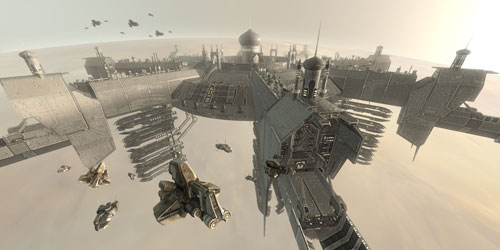


All images are copyright the respective artists, and may not be reproduced without permission.










